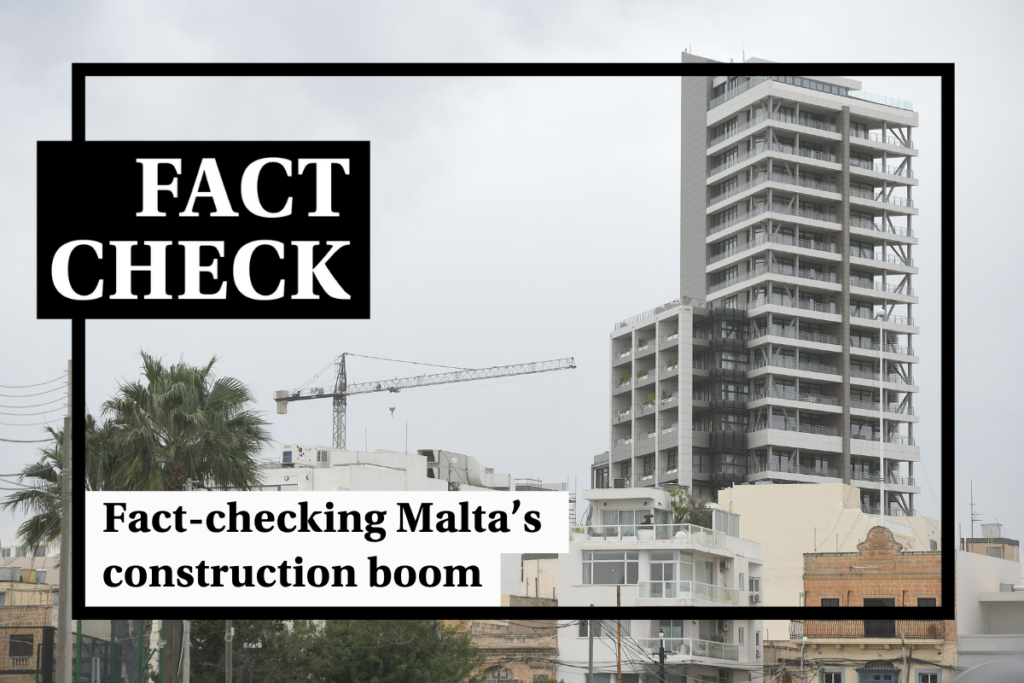While Malta’s construction boom over the past decade has long been plain to see, recent census figures lay bare the changing face of Malta’s towns.
The construction industry has been a key topic of debate in Maltese society over the past years, with public figures and organisations frequently making contrasting claims about the extent of construction in Malta. While representatives from the industry itself insist that the sector is in its infancy, with one prominent developer notoriously saying that “Malta needs 100 more years of development”, environmental organisations take the opposite view, arguing that the extent of development has become unsustainable.
Meanwhile, several nationwide surveys held over the past years have shown that overdevelopment is among the Maltese public’s greatest concerns, suggesting that these two contrasting narratives are set to dominate Malta’s political landscape for years to come.
The census, carried out every ten years, is the first time that data about development in Malta over the past decade has been in the public domain, allowing us to investigate these claims in more detail. The most recent census refers to data collected in November 2021.
Census figures published in August reveal how apartment buildings have come to dominate Malta’s townscapes, with the number of new homes outpacing Malta’s population growth and eclipsing older properties.
New dwellings rising faster than population
The total number of dwellings in Malta has risen by a third in just ten years, ballooning from almost 224,000 in 2011 to a little over 297,000 in 2021.
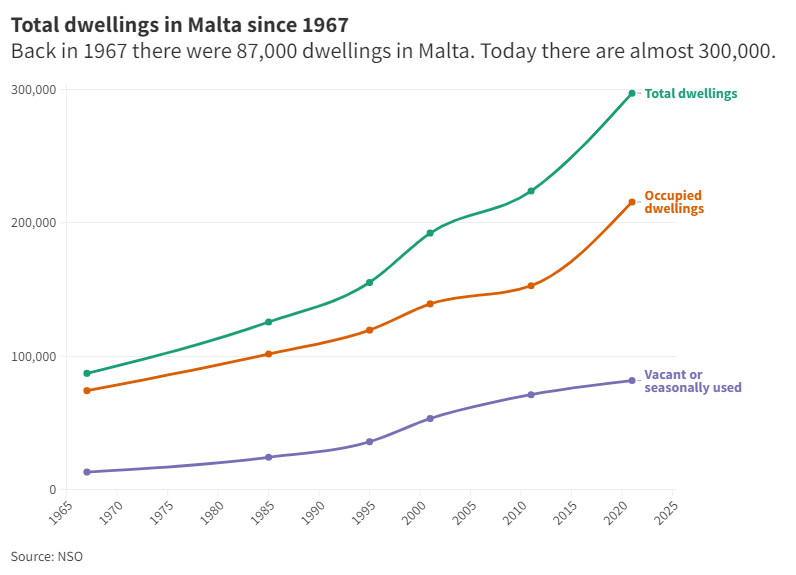
Proportionally, this far eclipses the increase in Malta’s population during the same period, which increased by a little under 25% during the same period.
In total, there are an additional 73,454 dwellings in Malta compared to 2011. This means that Malta added roughly one new dwelling for every 1.4 new residents in Malta.
Malta now has a dwelling for every 1.75 people in the country, including children. This used to be one dwelling for every almost four people around the time of Malta’s independence.
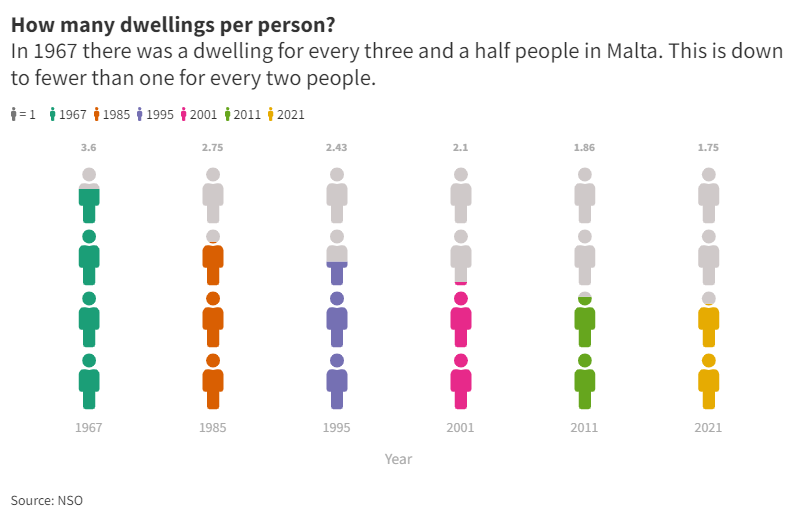
Over a quarter of buildings vacant or seasonally used
Of all Malta’s dwellings, 73% are used as people’s homes, with the remaining 27% either vacant or used as seasonal or secondary homes.
This has increased since 2011, when just over 68% of dwellings were occupied, with the remaining 32% partly or entirely vacant.
More broadly, the proportion of vacant or seasonal dwellings is remarkably similar to what it was in 2005, albeit there are now almost 30,000 more vacant or seasonal properties than there were back then, in absolute terms.
A quarter of all homes built in five years
The census also reveals that a staggering 26% of all occupied homes in Malta, some 55,500 homes, were built between 2016 and 2021.
Over the full decade between 2011 and 2021, this figure is 39%.
In the ten years preceding the 2011 census, a total of 19,423 new homes were built. By contrast, 84,055 new homes were built in the subsequent ten years, more than a four-fold increase.
This is the equivalent of 23 new homes per day, over a period of ten years.
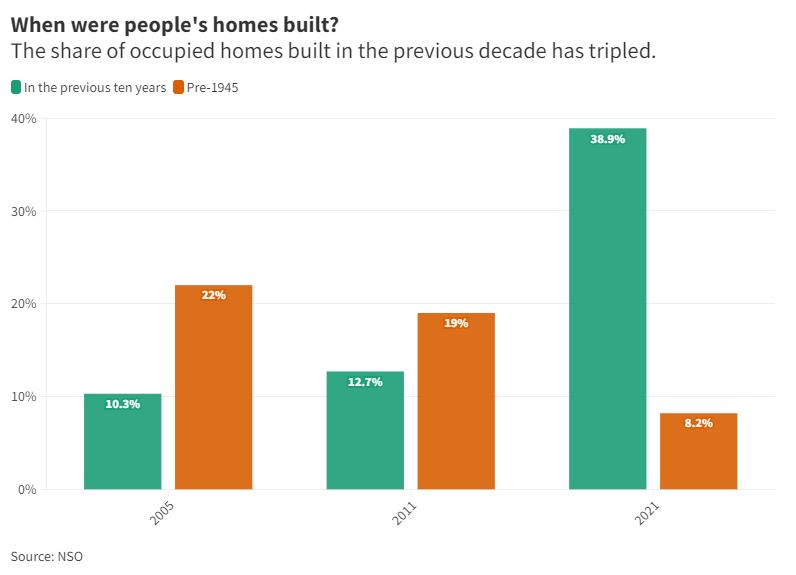
Apartments make up three out of every four new homes
The type of new homes has also changed drastically over the past decade.
Three out of every four new homes constructed over the past ten years is an apartment. In total, almost 63,000 new homes are apartments or penthouses that were built between 2011 and 2021. By contrast, only 2,300 new terraced houses were built, less than 3% of the total of 84,000 new homes since 2011.
This means that for every newly built terraced house, Malta built 27 new apartments.
On the other hand, 3,084 terraced houses were built in the decade leading up to the 2011 census, making up 8% of new homes, compared to 24,134 new apartments, making up 62% of all new homes.
Occupied apartments in Gozo up 240%
In total, Malta now has some 104,300 occupied apartments, a staggering 132% increase since 2011.
Gozo has seen an even bigger growth, going from just 1,700 occupied apartments in 2011 to over 5,800 today, some 240% more than a decade ago.
Older buildings vanishing
Hand-in-hand with the swell of new buildings, fewer people than ever are now living in older buildings.
The share of pre-war buildings now serving as people’s main residence has plummeted from 19% in 2011 to just over 8% in 2021.
Likewise, buildings built between 1946 and 2001 now make up 41% of all homes, compared to 68% in 2021.
Some towns have been harder hit than others. Sliema, a seaside town that has become a prime tourist hotspot over the decades, has seen almost half of its pre-war homes vanish, going from 2,435 in 2011 to just 1,384 a decade later.
While Sliema remains the locality in Malta with the highest number of homes dating back to before 1918, at 626 homes, this figure previously stood at 1,141.
Likewise, Birkirkara, one of the largest towns in Malta, has seen a third of its pre-war homes disappear or become unoccupied, while the towns of Qormi and Rabat have each seen their pre-war homes shrink by over 400 in a decade.
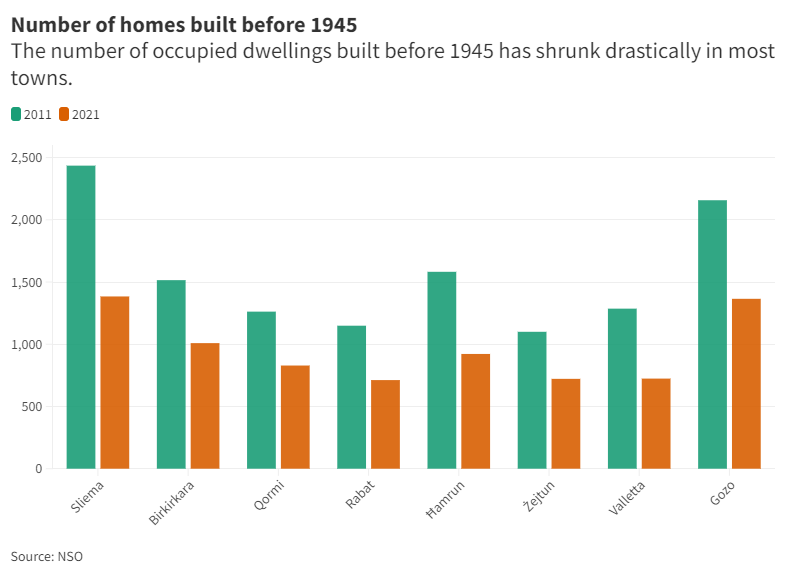
In total, the number of occupied pre-war homes in Malta has shrunk by some 12,500 over a span of ten years.
This means that the past decade has seen an average of 3.4 pre-war homes either demolished or vacated each day.
Better maintained buildings
The flip side to this is that people generally live in homes that are in a better state of repair than they once did.
Almost 80% of people live in a home that is in a good state of repair, up from 74% in 2011. Likewise, the share of people who live in a dilapidated home or one that needs serious repairs has shrunk slightly from 1.8% in 2011 to just over 1% today.
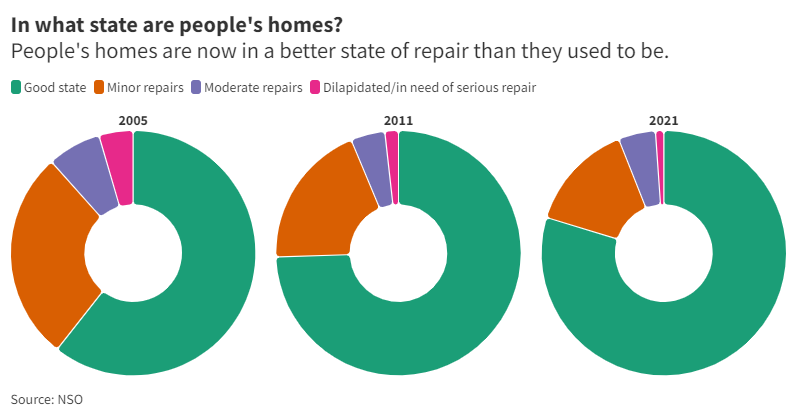
Of Malta’s total building stock, including properties that are vacant or only used seasonally, just over 9,000 buildings are considered to be dilapidated or in a very poor state. This is actually a decrease of some 750 properties compared to 2011.
Likewise, fewer buildings are left in shell form today, dropping from 6,900 in 2011 to just over 6,000 a decade later.

